We headed south for 1,000 miles through desert. Our first stop was Humberstone by Iquique, an abandoned saltpeter site and a World Heritage Site (#28).
We spent the night and headed to the city of Antofagasta which is down a steep and winding road. The Pan American is a straight highway about 50km from the coast on a plane at 3,000 feet. We parked by a huge lithium complex (La Negra) and drove into town and parked – and people promptly stopped to get their photo taken in front of the blue van!
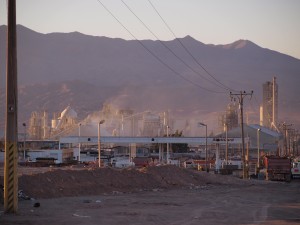
We stopped at a mall and Sylvia & Annabelle road giant wheeled stuffed animals around in a circle for five minutes while awful xylophone / children’s choir music played. I think everyone would have rode them but the rest of us were too big.
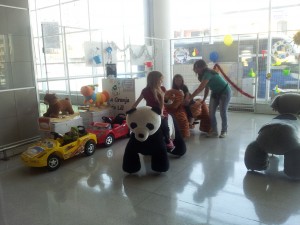
We walked along the ocean front and did some shopping and spent the night. The next day we continued our long, long desert drive south. We did drive along the sea for awhile and camped a few nights on the beach. We have some tsunami fear so we subscribed to the tsunami warning center’s email and SMS warning system (weatherupdates@public.govdelivery.com), which messages us whenever an earthquake that potentially could cause a tsunami occurs. This means we get messaged several times a day.
The ocean here is beautiful, very deep blue. Almost like the Caribbean.
The city of La Serena was the beginning of the end of the desert. We had hope of visiting the Penguin Reserve but it is only reached by small boats and the water was too choppy. We waited two days and then decided to try to visit penguins farther south. La Serena was a strange city. We pulled into a Copec truck stop on the north end of town to do some La Serena recon. It was getting dark so we disconnected the van and headed into town. They had a Hyper Lider (Walmart) which is where everyone seemed to shop. Hyper Liders are even worse than American Walmarts because there is usually not much left on the shelves. They are two stories and have a moving sidewalk that you can put your cart on and ride up to the second floor, so this was a plus. We meandered around town looking for a better grocery store and found a store, not sure it was better.
Back at the camper, we met a woman selling chicken sandwiches who spoke English very well and she talked to Mark quite a bit about La Serena. She offered the use of her washer for laundry, which was really nice, but the sheer size of our laundry needs seemed overwhelming and we did not take her up on her offer. We spent the next day driving along the beach and hanging out, wondering if the sea would be calm enough for penguin watching. We had a plan to do some sea kayaking but that will have to wait for the fjords further south. We left La Serena and headed south, always south. Next stop: Valparaiso.
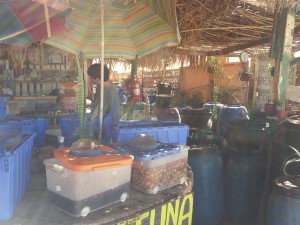
We had no idea where we would park and how it would all work out. We had an idea we would take the train to Valparaiso so we headed to the town of Quillota to see if we could park and ride the train. Turns out, we could not. The train had no parking lot. We found a gas station and asked where we could park overnight and they said we could park right there, which was nice and convenient and loud and busy and right next to the gas pump where trucks and buses got gas, often with less than 4 inches between us and them. It was a terrible place to camp, probably the worst place on the trip. Even worse than the night at the Colombian gas station where dozens of people came to look at us. We left early the next morning to try the train station in the next town but again, there was no parking lot. We decided to drive through Valparaiso and see if we could find a good spot. The Pan American circumvents the city so we drove to the southern end and there, like a mecca beckoning us toward it, was the best of all overnight parking spots: a truck stop with free wifi, free showers, a mini mart and a McDonalds. We were able to score a great spot so we promptly ditched the camper and headed into town.
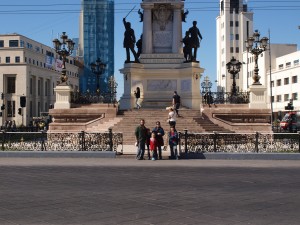
Oh Valparaiso, the most beautiful city we have visited yet. A shipping hub before the Panama Canal was built, Valparaiso fell into decline in the early 1900’s, suffered through earthquakes and then was revitalized in the 1990’s. Wikipedia says:
“Nicknamed “The Jewel of the Pacific”, Valparaíso was declared a world heritage site based upon its improvised urban design and unique architecture. In 1996, the World Monuments Fund declared Valparaíso’s unusual system of funicular elevators (highly-inclined cable cars) one of the world’s 100 most endangered historical treasures. In 1998, grassroots activists convinced the Chilean government and local authorities to apply for UNESCO world heritage status for Valparaíso. Valparaíso was declared a World Heritage Site in 2003. Built upon dozens of steep hillsides overlooking the Pacific Ocean, Valparaíso boasts a labyrinth of streets and cobblestone alleyways, embodying a rich architectural and cultural legacy. Valparaíso is protected as a UNESCO World Heritage Site.” (#29).
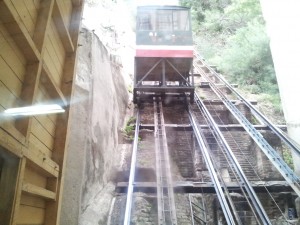
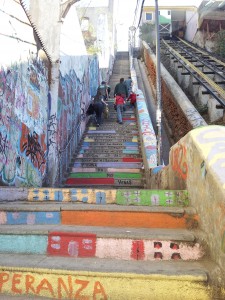
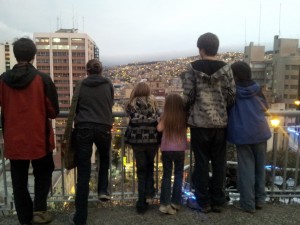
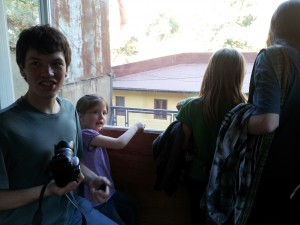
We spent a few days in Valparaiso. We rode the train to Vina del Mar. We rode more funiculars. We learned all about the Chilean version of the Battle of Iquique. You can find the entire dramatic story at: http://en.wikipedia.org/wiki/Battle_of_Iquique . But since you probably won’t read the wikipedia article (but you should because it is full of secret pacts that everyone knew about, motivational speeches that end with Long Live Chile! or Long Live Peru! and much drama) here is the shortened but still very interesting story of the Battle of Iquique:
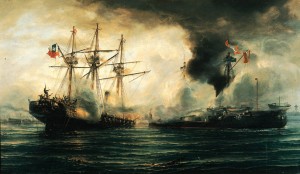
The year is 1873. Chile and Britain have interest in a nitrate mine near Antofagasta (now northern Chile but then — Bolivia). Bolivia threatened to nationalize the mine. Chile got angry and seized control of the Bolivian mine which made Bolivia declare war on Chile. Peru was also forced to declare war with Chile because they had a secret treaty with Bolivia that Chile knew about. Six years go by. Then one day in May, Chile decided to take their entire Navy fleet and sail north. Coincidentally, Peru took their Navy and sailed south. They sailed right past each other without knowing, literally ships that passed in the night. Chile left two old boats in Iquique and Peru arrived and blew them up. But before that, there was a lot of long winded speeches, some fencing, general swashbuckling and much manliness. At one point, a Chilean commander named Pratt decided to jump aboard a Peruvian vessel with his men for more manly swashbuckling. He “raised his sword and cried his final order: “Let’s board, lads!” but no one heard him except one other man so he was completely outnumbered but bravely fought (with machetes and swords and probably swinging from the rigging) to the death. Here is the interesting thing – the death of Pratt inspired thousands of young Chilean men to join the Navy and it tipped the scales and they won the war and the mineral rich northern region leaving Bolivia landlocked, poor and bitter to this day.
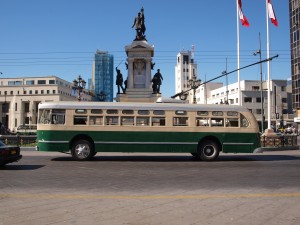
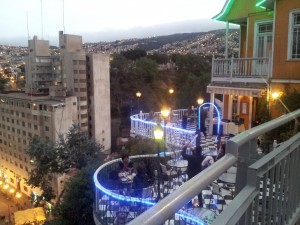
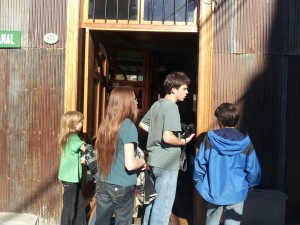
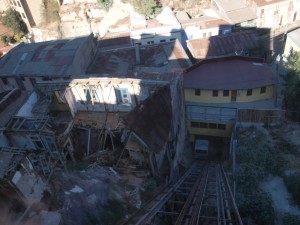
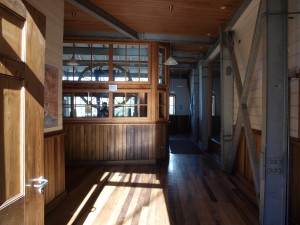
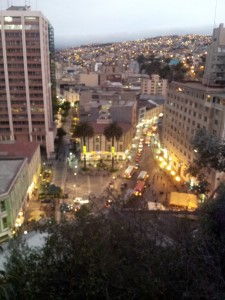
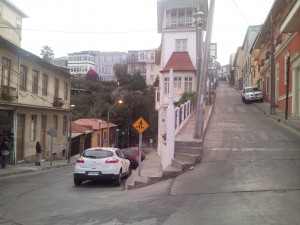

One Response
Kay DeCorso
The photos, alone, are breathtaking. Amazing sights you are seeing. Thanks for taking the time to share with others. Love you guys!